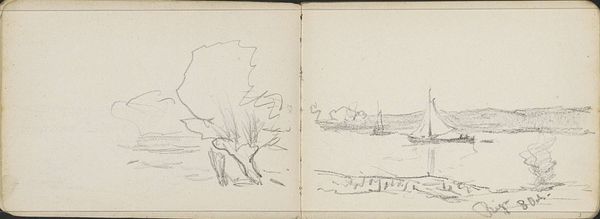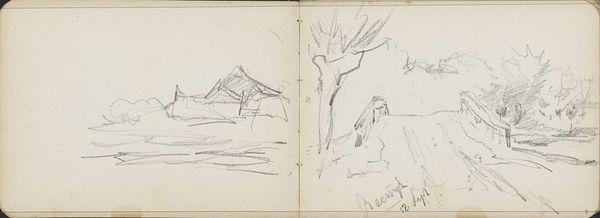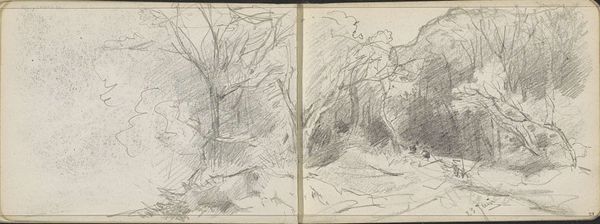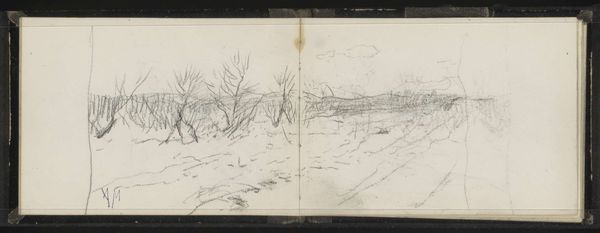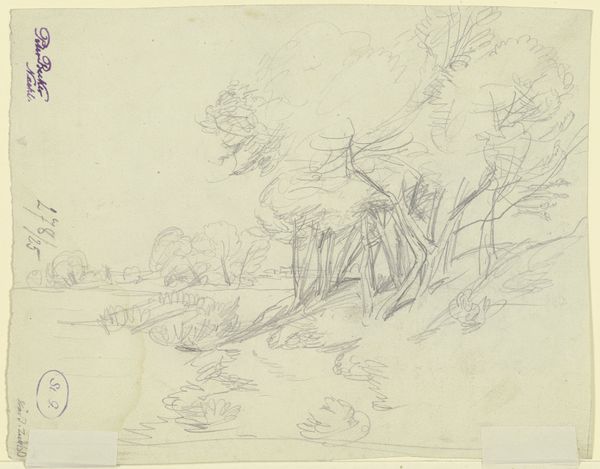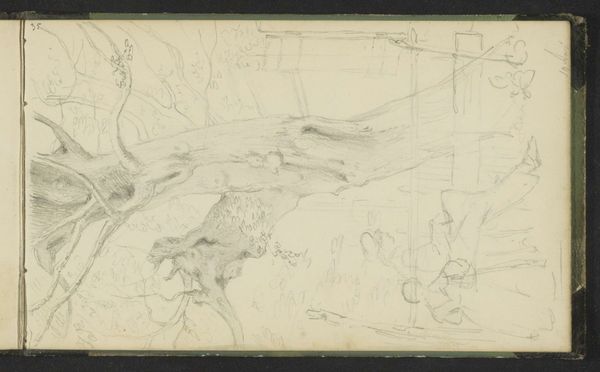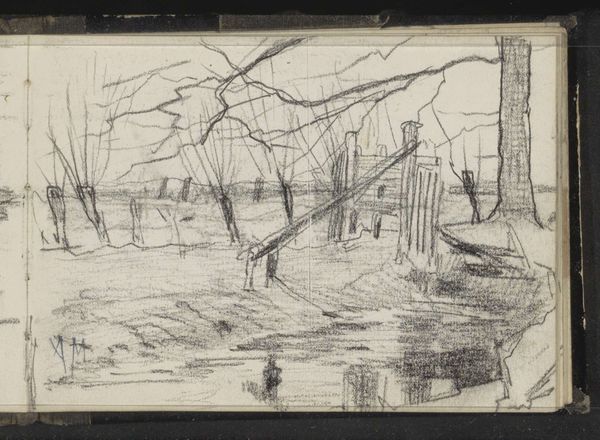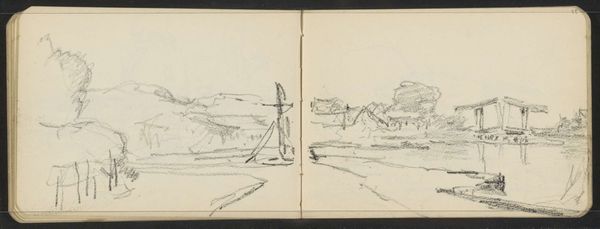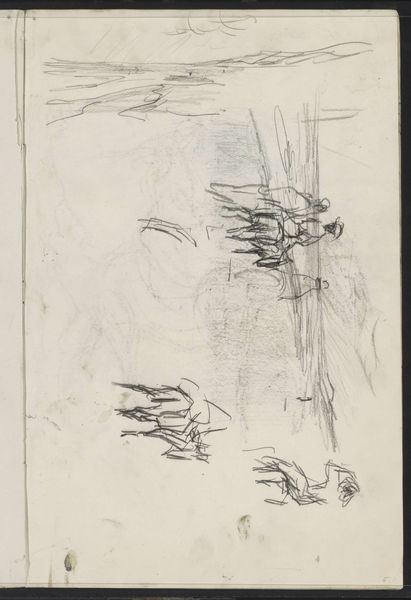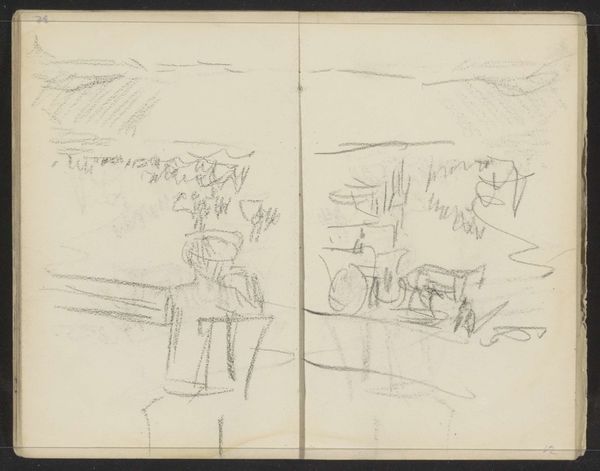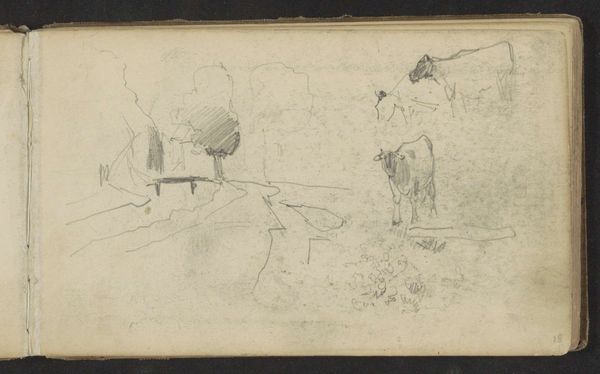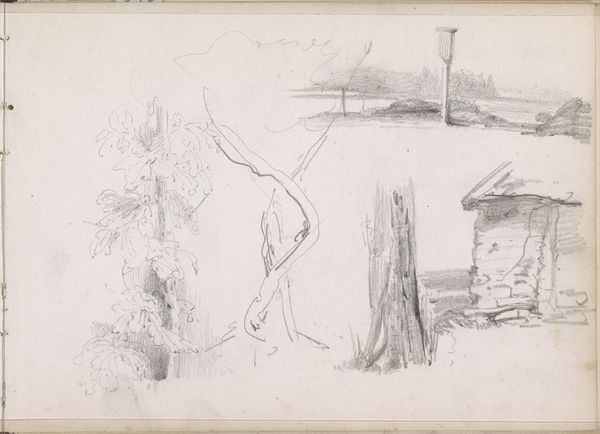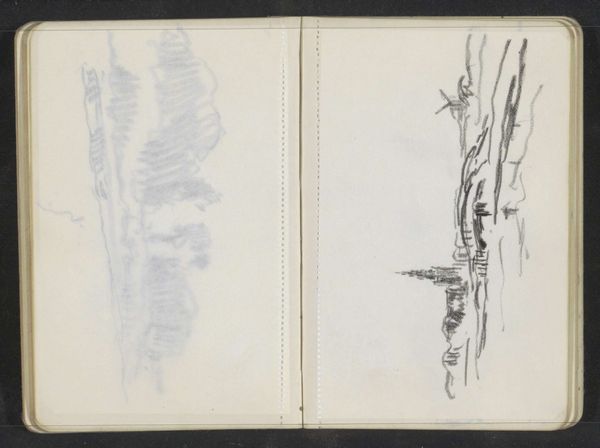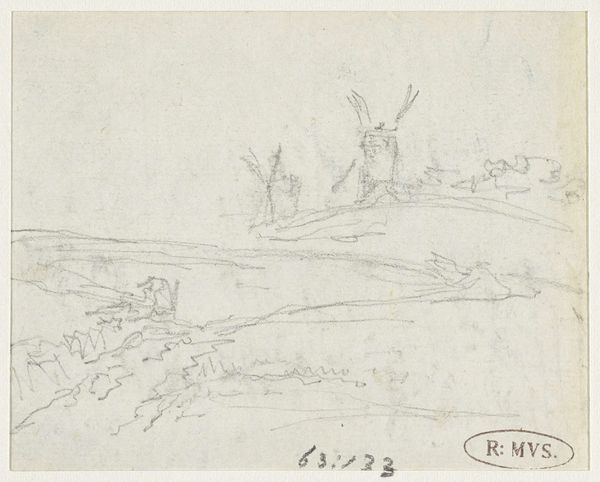
Copyright: Rijks Museum: Open Domain
Editor: This is "Bomen op de weg naar Odoorn," or "Trees on the Road to Odoorn," a drawing by Ferdinand Oldewelt from around 1904 to 1912, using pencil and ink. It feels like looking at the fleeting impressions captured in a personal sketchbook. What strikes you when you look at it? Curator: The symbolism of trees is powerful and multifaceted. They often represent life, growth, and connection to nature. The way Oldewelt sketches these trees, almost as if they're bowing or leaning, hints at a deeper relationship between the artist and the landscape. Does the road, in your mind, suggest a specific journey, perhaps a personal one for the artist? Editor: That's a great question. Perhaps it’s the journey of artistic discovery itself? The two panels—one with just a few stark trees and the other more dense—make me think about stages in learning how to see and then capture the world. Curator: Absolutely! Consider the cultural memory associated with landscapes in the early 20th century. Think about how industrialization was rapidly changing the world. The focus on the natural world could reflect a yearning for simpler times, or an assertion of nature’s enduring presence amidst societal change. Do you see any potential commentary on this? Editor: The contrast between the denser and sparser sections might be a commentary. One shows the bustling road; the other, the solitude of nature. So, maybe Oldewelt is using the trees as symbols of resilience, opposing the clear-cut paths of industry. Curator: Precisely! The very act of sketching these trees could be interpreted as an attempt to capture and preserve a disappearing world, reflecting an awareness of cultural loss. Editor: I never considered it in that light, but viewing it as a commentary on societal change definitely enriches the piece for me. Curator: And for me, it reinforces how even a simple sketch can hold layers of meaning when you explore its historical and symbolic context.
Comments
No comments
Be the first to comment and join the conversation on the ultimate creative platform.
